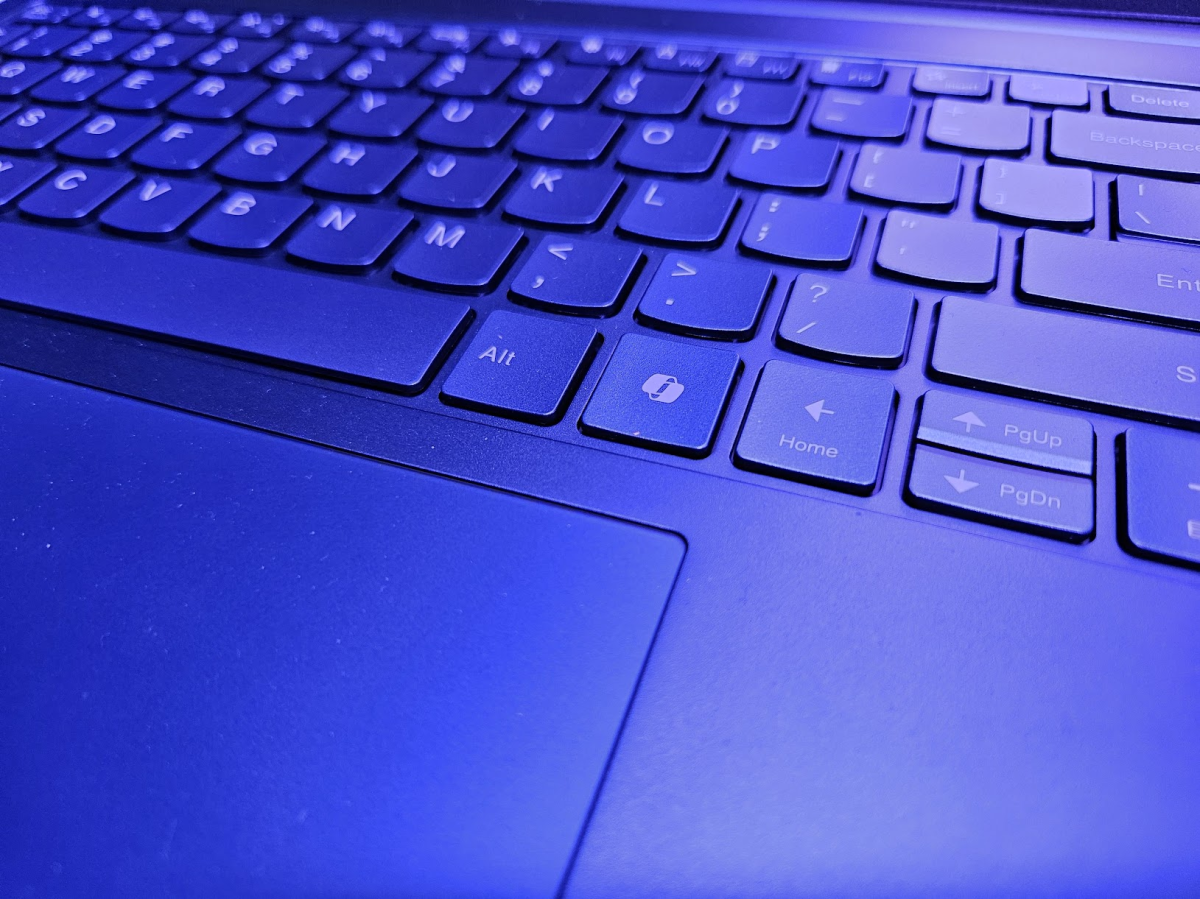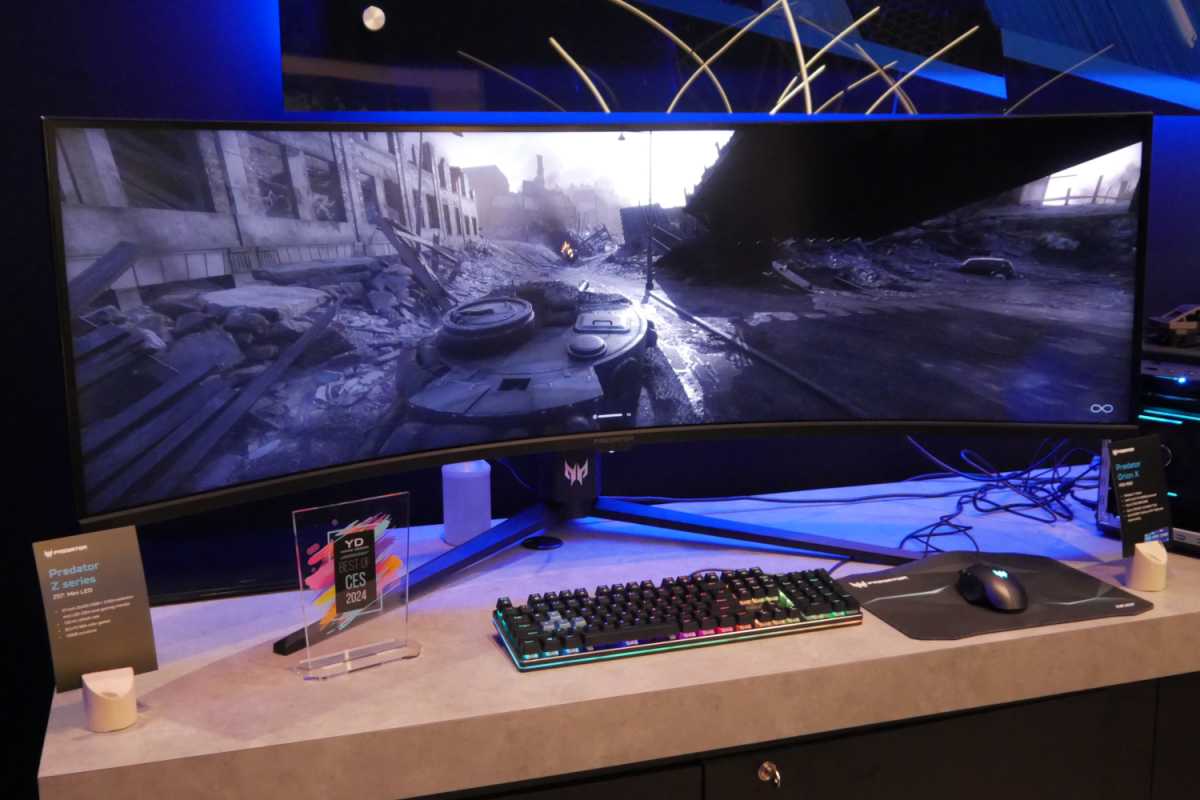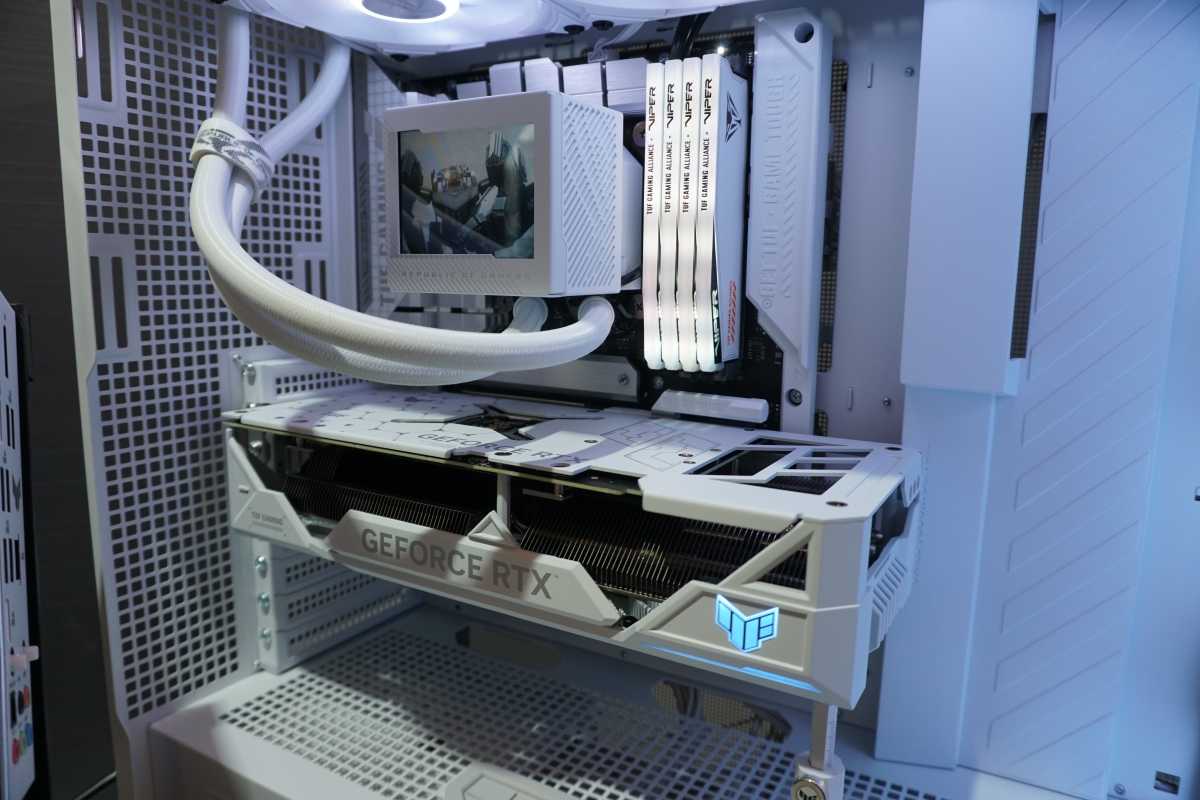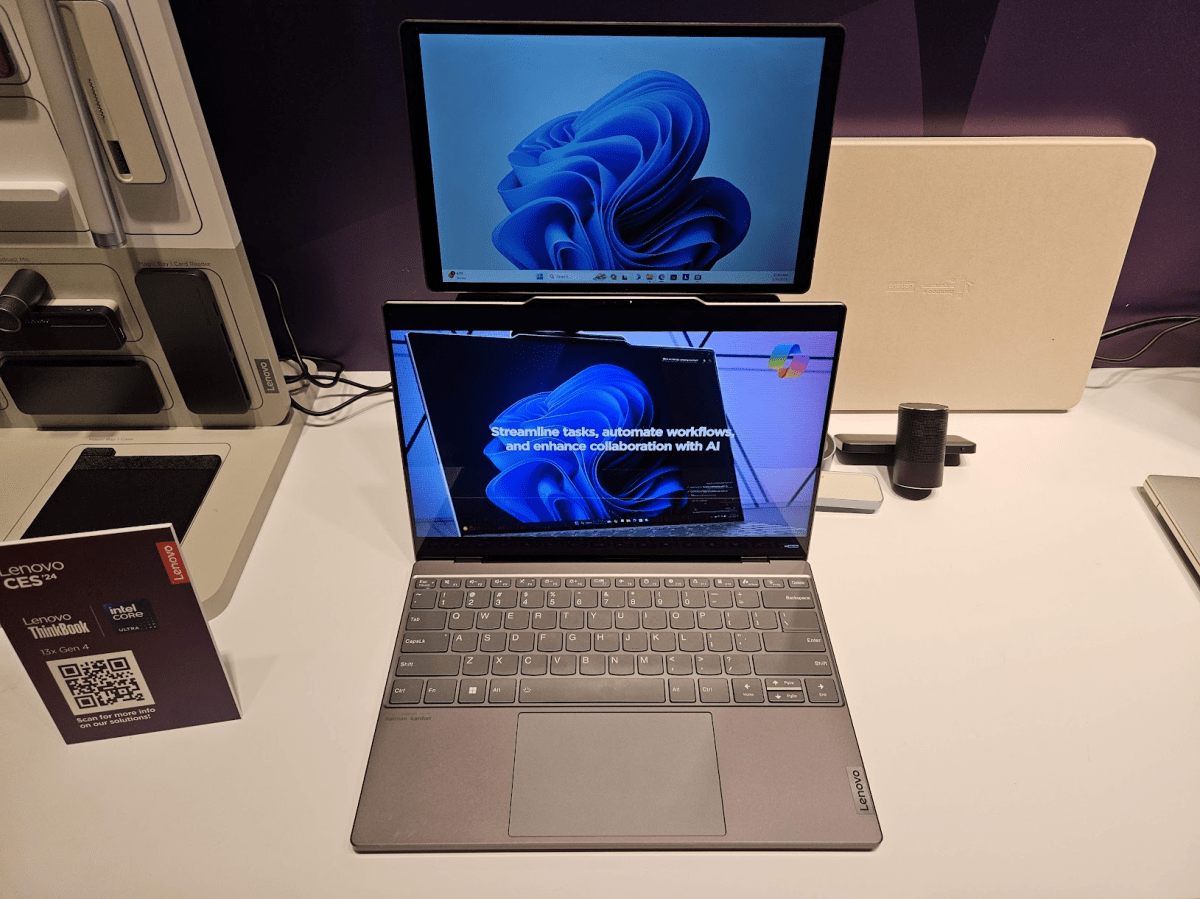AI PCs, gaming upgrades, and a pinch of weirdness.
Every time you think the PC industry is out of ideas, they come back with some new ones.
CES 2024 offered a solid glimpse of where things are going. The AI hype train is running at full speed, of course, but we also saw some promising developments for PC gamers and some fresh takes on portable computing. It’s a great time to be a PC user, and these emerging trends help prove it:
AI PCs (and puffed-up AI marketing) arrive
With Intel heralding the “AI PC era” at CES, PC makers are eager to play up the AI angle on their latest laptops. Still, consumers will need to be savvy about what’s actually new and useful here.
On the Intel side, the key component is the 14th-gen Core Ultra’s Neural Processing Unit (or NPU), which can handle AI tasks while using less power than a dedicated GPU. Some Windows AI features will require an NPU—including the Windows Studio Effects package that adds background blur and head tracking to webcam video—and some PC makers are also finding their own uses for it. HP, for instance, has showed how its Omen Transcend 14 gaming laptop can offload video streaming tasks to the NPU and free up the GPU for actual gaming.

Just be aware that high-end GPUs are still better for AI tasks overall, and that popular cloud-based AI applications such as ChatGPT—and Microsoft’s Copilot sidebar in Windows, for that matter—won’t use on-device processing at all. Even some features that vendors are talking up as AI-based, such as Acer’s audio noise cancellation, are just new renditions of what we already have.
Badass monitors get even better

Matt Smith / Foundry
If 2023 was the year of more accessible OLED monitors, 2024 is about ratcheting up their performance.
LG, for instance, unveiled a 27-inch 1440p OLED monitor with a 480Hz refresh rate, as did Asus (which is using the same LG panel). Both are the fastest OLED monitors to date, and are not far off from what we’ve seen on the LCD side. Samsung, meanwhile, is boosting refresh rates on its QD-OLED panels, as seen on the Odyssey G8 (4K, 240 Hz) and Odyssey G6 (1440p, 360 Hz).
And if extreme ultrawides are what you’re after, Acer’s joining the fray with its Z57 Mini-LED curved monitor, which essentially puts two 4K monitors side-by-side on a 57-inch display. It’ll provide some much-needed competition for the likes of Samsung’s Odyssey Neo G95C, which debuted at CES last year. Those in the market for high-end gaming monitors in 2024 will be spoiled for choice.
The War on Cables continues

Brad Chacos/IDG
While PC hardware makers started laying the groundwork for cable-free desktop builds last year, 2024 is the year in which the War on Cables gains significant traction.
At CES, Asus was showing off a new concept called BTF, which officially stands for “Back to the Future” but technically refers to back-of-motherboard placement for cables and power connections. BTF motherboards will also have an extra 600W PCIe connector, allowing compatible graphics cards to connect without any wiring. Cooler Master, Corsair, Inwin, Lian Li, Phanteks, Silverstone, and Thermaltake pledging to build compatible cases under what Asus calls the “BTF Alliance.”
MSI has also found a partner for its own Project Zero motherboard, which lacks Asus’ special PCIe connection but otherwise uses similar reverse-mount techniques to keep data cables and power connections out of sight. Maingear plans to go cable-free in its Zero Drop and NV9 Zero Concept designs, both due out this quarter.
Laptop makers get weird

Jared Newman / Foundry
Even the best laptops these days are pretty boring, so it’s nice to see PC makers display a taste for experimentation as they try to stand out.
Exhibit A: Lenovo’s ThinkBook Plus, whose 14-inch touchscreen boots into Android when you detach it. Meanwhile, the laptop base can keep running Windows while docked to an external monitor. A lot of PCs claim to be 2-in-1s, but this one actually is two computers on one device. Lenovo also showed off a “Magic Bay” concept for its ThinkBook 13X and ThinkBook 16P, allowing users to clip a range of accessories onto a magnetized port at the top of the screen. (Snapping on a small secondary monitor seems especially appealing.)
Asus used CES to indulge in its wild side, as well, announcing a portable monitor with a folding screen along with a dual-screen OLED laptop. It’s similar to Lenovo’s Yoga 9i from last year, but has a full keyboard and trackpad deck along with a lower price of $1,500. Sooner or later, one of these ideas is going to stick.



